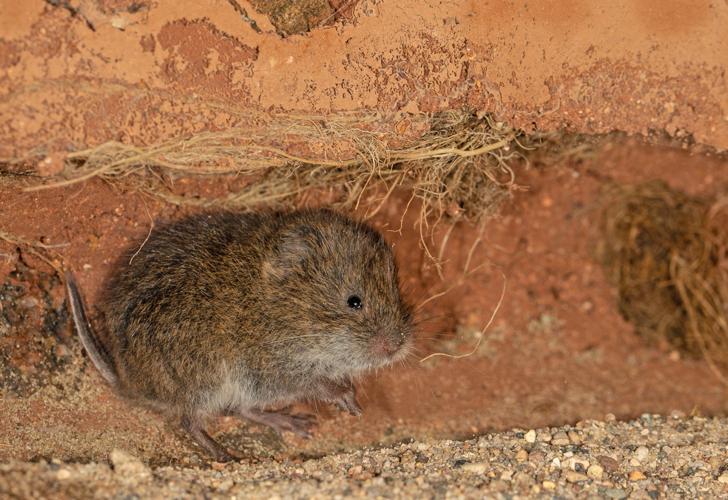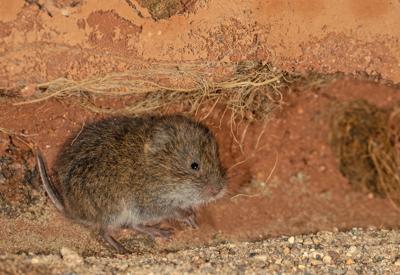If you have followed my columns over the years, you no doubt know that I love all animals, from the tiny shew to the mighty moose and everything in between. I find fascination and amazement in all the critters, not just some of the cool ones.
Recently, I was photographing such a critter, and it occurred to me that this animal is incredibly common, but I am willing to bet that most have never seen one, let alone know anything about it. This critter is the meadow vole ( Mocrotus pennsylvanicus ).
Voles are different from other rodents in many ways. They are stout little critters with a distinctive short-blunted nose, unlike mice and shrews, which have long-pointed snouts. They have thick dark brown fur, small dark eyes and adorable, tiny, fuzzy ears. Mice have larger eyes and naked ears. Voles have short tails, unlike the long tails in mice.
Meadow voles are the most widespread of the approximately 50 species of vole in the United States. They live in open habitats with heavy vegetation across Canada and Alaska. They extend down and throughout the northern states and dip down as far south as Georgia in the east. They also live in the Rocky Mountains to the west.
The front and back legs of voles are equal in size and strength, unlike mice, which have much larger and stronger hind legs that allow them to jump. The vole’s equal-size legs make them very efficient at traveling around at a fast trot through the thick vegetation.
Each vole has a network of trails and paths that are laid out like streets in a neighborhood. The paths weave between the thick plant vegetation or just under the snow right at the surface. Either way, they are hard to see until a fire burns the vegetation or the snow melts, which exposes the well-worn paths.
Voles are active all year long and maintain their network of trails along with a series of nests that look like clumps of grass about the size of a softball or larger. Typically, well-worn trails lead to and from these nest sites. The inside of the nest chamber is clean, because it has a separate spot for the latrine.
Voles are herbivores, eating mainly grasses, sedges and seeds. They have remarkably dexterous feet, which allow them to hold onto the grasses they nip with their teeth before eating. They feed for short periods of time throughout the day and then rest. Voles practice coprophagy, which means they eat their own feces so that the plant material they consume makes a second pass through their digestive system to extract all possible nutrients. This is common in other animals, such as rabbits.
Vole populations have peaks and valleys over a five-year span of time, similar to many other small animal species. The driving force behind the cycle up and down of their population is hotly debated. Some believe the population swings are driven from the bottom up by food availability or shortages, while others argue that the populations change from the top down by the pressures placed by predators.
Voles can reproduce at any time of year, with summer litters numbering larger than winter litters. The typical litter size is four to six, although they can be as large as 10. Gestation is only 21 days, and the females are ready to breed again almost immediately after giving birth. Newborns develop quickly and are weaned at 12 to 14 days. By two weeks, nearly 40 percent of the newborns have either died or been killed. Within 30 days, about 90 percent of litters are lost, most because of predation.
Everything from shrews and weasels all the way up to foxes, coyotes and wolves eat voles. Raptors, such as owls and hawks, consume voles as well. They are a highly sought-after food item, which explains why they breed so often and with so many offspring. They are critical for the health of other animals.
I recently spent some time photographing a wonderful meadow vole and it made me think about sharing the story of these amazing critters. Until next time…



